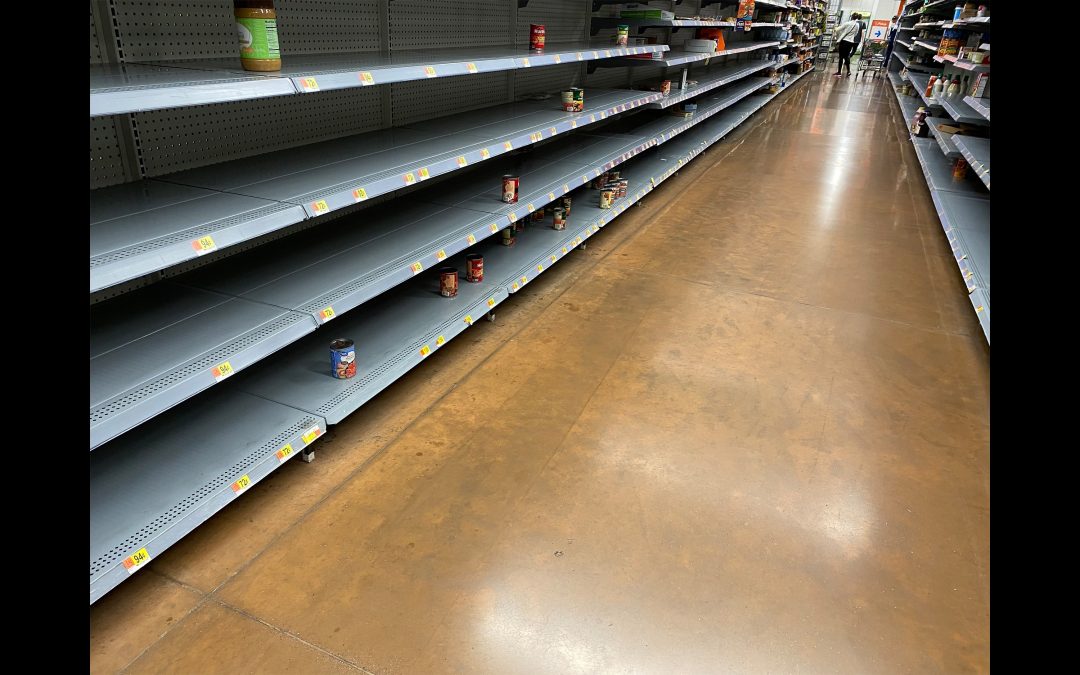The COVID-19 pandemic and supply chains

Empty shelves. Lately, you see them every time you go to the grocery store. Essential items are missing while grocery stores struggle to keep up with demand.
Dr. Asoo Vakharia, McClatchy Professor and Director, Supply Chain Management Center in the Warrington College of Business discusses challenges faced by supply chains during a pandemic and how businesses are doing their best to keep shelves stocked.
Q: How taxing can a pandemic like COVID-19 be on the supply chain?
Vakharia: The pandemic (stemming from COVID-19) is having a “Double Whammy” impact on supply chains:
- It is impacting supply chains across almost all industries. In the past, most disruptions were limited to a single supply chain. The pandemic, however, is affecting supply chains in the aircraft, automobile, electronic products, hospitality, medical, pharmaceutical, retail, technology, travel, and personal service/support industries.
- Depending on the product, supply chain effects are orthogonal, meaning the effects on each industry can be different. While the aircraft, automobile, and electronics supply chains (for example, Volkswagen and Renault, Airbus, GM, Ford and Fiat Chrysler, and Sony) are facing closures and/or extensive shutdowns, the medical product and grocery supply chains (for example, Medtronic, and Tesco) are facing pressures to ramp up capacity/supplies due to increased demand.
Spillovers stemming from these supply chain effects are resulting in higher unemployment through layoffs and profitability declines/higher losses for individual businesses. All these changes are motivating policy makers to focus their efforts on efficient and effective supply chains operations.
Q: Going to the grocery store now reveals many empty shelves with some products having limited availability. How difficult is it for grocery stores to stay stocked with products during the COVID-19 pandemic?
Vakharia: Impulse and emotional/irrational consumer purchase decisions are the primary drivers of empty shelves during the pandemic. In the immediate short-run, we can expect this to continue for two reasons: consumers are unlikely to change their beliefs and purchase behaviors, while store managers are unable to meet these demand surges due to constraints arising from established incoming transportation contracts.
Q: How much were grocery stores able to predict customer demand before this started?
Vakharia: Grocery shelf stocks are determined using sophisticated forecasting models. In general, for products with short shelf-lives such as perishables, demand forecasts are prepared using single season newsvendor models which allow for an explicit integration of shortage versus spoilage costs. For products with longer shelf-lives, demand forecasts are prepared using par-level approaches in which unsold product costs are traded-off against consumer service levels. In general, with the availability of substantial prior purchase data, demand for each product category is forecasted with a high degree of accuracy.
Q: Toilet paper specifically has become a hot item. When grocery stores recognized this, how did they adjust to make sure they are bringing in as much as possible to meet demand?
Vakharia: The problem with toilet paper shortages at the retail level is still apparent as reflected by empty or partially empty shelves. Manufacturers insist that there is no shortage as they point to adequate capacity and warehouse stocks, suggesting that the problem arises at the retail level. To alleviate this issue retailers have several actions they can pursue: reconfiguring their inbound transportation network to ensure they receive daily shipments; recruiting additional employees to quickly restock shelves; limiting consumer purchases; and building consumer awareness that the same product is available online.
Q: What recommendations would you have for store managers trying to correctly manage inventory ordered?
Vakharia: In general, traditional inventory ordering mechanisms cannot be adapted for use when there are supply or demand disruptions. For the grocery store manager, shortages of products stemming from either supply shortages or demand surges can best be managed by adopting one of more of the actions mentioned above (frequent in-store deliveries, increasing stocking capacity, limiting purchase, and/or shifting demand to other purchasing channels).
Q: How can grocery stores be prepared for events like this in the future?
Vakharia: From a product stocking/forecasting perspective, we have already discussed appropriate actions managers can pursue. A pandemic, however, also requires a plan for:
- Longer operating hours in case there are community-imposed limits on number of shoppers in a particular location;
- Increased staffing to ensure that supplies are stocked on receipt and to enhance customer service;
- Implementing safety rules and mechanisms to protect both customers and employees; and
- Education and training programs for customers and employees to restrict spread of the virus
Q: When the spread of COVID-19 slows down, what do you expect to be lessons learned from it in supply chain?
Vakharia: Data available to date indicates that supply chains have encountered a shutdown and/or ramp-up effects due to COVID-19. These supply chain effects are exacerbated by the human and financial costs arising from the need to either reduce the number of employees or recruit additional employees. Below are some recommendations for companies to alleviate future problems.
Supply Disruptions: plan for buffer inventories; balance cost and sourcing reliability/flexibility when establishing a supply network; geographically diversify the supply network; and integrate technology to achieve high levels of visibility and transparency in the supply chain.
Operations/Distribution Disruptions: plan for slack capacity (both labor and equipment); identify and build relationships with alternative operations/distribution networks; and create a flexible transportation network.
Retailing Disruptions: traditionally, price increases have been used to discourage sudden demand surges, however, in a pandemic situation, this is not viable due to price gouging concerns. Other mechanisms that can be used are: increase/decrease operating hours for retail outlets; recruit additional employees to quickly stock empty shelves; train and educate employees and customers on safety; and create inventory reserves for non-perishables.




